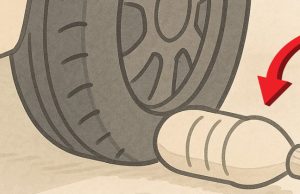
The mop is a vital tool for household cleaning, yet it’s often overlooked when it comes to proper care. Using a dirty mop can not only reduce cleaning effectiveness but also spread germs and create unpleasant smells.
While many people consider throwing their mop away once it looks worn, a few simple natural remedies can restore its function and make it look almost new again.
This guide will show you how to clean, disinfect, and eliminate odors from your mop using affordable, eco-friendly methods.
When to Clean or Replace Your Mop
Before tossing out a mop, evaluate whether it’s truly beyond saving:

Clean it: If the mop is still structurally sound but just dirty, a thorough cleaning can bring it back to life.
Replace it: Only opt for a new one when the mop is significantly worn out or its fibers are fraying and damaged.
Caring for your mop not only saves money but also helps reduce environmental waste.
Natural Cleaning Solutions for Your Mop
1. Baking Soda: A Deep, Natural Cleanser
Baking soda is known for its powerful cleansing and deodorizing abilities.
Steps:
- Dissolve half a cup of baking soda in a bucket of warm water.
- Soak the mop for at least 2 hours.
- Rinse thoroughly until the water runs clear.
- Optional: You can also toss the mop into the washing machine with baking soda added to the detergent compartment. Set the machine to 70°C for optimal results.

2. Vinegar and Lemon: Disinfect and Neutralize Odors
Vinegar is a natural disinfectant, and when paired with lemon, it effectively eliminates odors and bacteria.
Steps:
- Fill a bucket with warm water.
- Add one cup of vinegar per liter of water.
- Let the mop soak for 30 minutes.
- Rinse thoroughly and wring it out.
- Extra tip: For better grease removal, mix in two tablespoons of baking soda.
3. Lemon Juice: Fresh and Germ-Free
Lemon not only sanitizes but also leaves behind a refreshing scent.
Steps:
- Squeeze the juice of two lemons into a bucket of water.
- Submerge the mop for an hour.
- Rinse well to remove any residue.

4. Water, Ammonia, and Tea Tree Oil: A Strong Antibacterial Mix
Ammonia is excellent for breaking down tough grime, while tea tree oil adds antibacterial properties and a pleasant aroma.
Steps:
- Fill a bucket with warm water.
- Add a small amount of ammonia and a few drops of tea tree oil.
- Soak the mop for 30 minutes.
- Rinse thoroughly to ensure no ammonia remains, and let the mop dry completely before storing.
Tips for Maintaining a Clean Mop
Rinse after every use: Prevents buildup of dirt and bacteria.
Dry it properly: Avoid leaving it damp—hang it in a well-ventilated area.
Stick to natural products: Ingredients like baking soda, lemon, and vinegar are effective, safe, and budget-friendly.
Important Safety Notes
Limit chemical use: Harsh cleaners can damage mop fibers or leave harmful residues.
Be mindful of allergies: If you’re sensitive to products like ammonia, choose gentler alternatives.
By using simple ingredients found at home—like vinegar, lemon juice, baking soda, and tea tree oil—you can keep your mop in excellent shape without constantly buying replacements.
These natural cleaning methods are cost-effective, sustainable, and easy to use. With proper care, your mop will stay fresh and functional, making your cleaning routine more effective and hygienic.




















